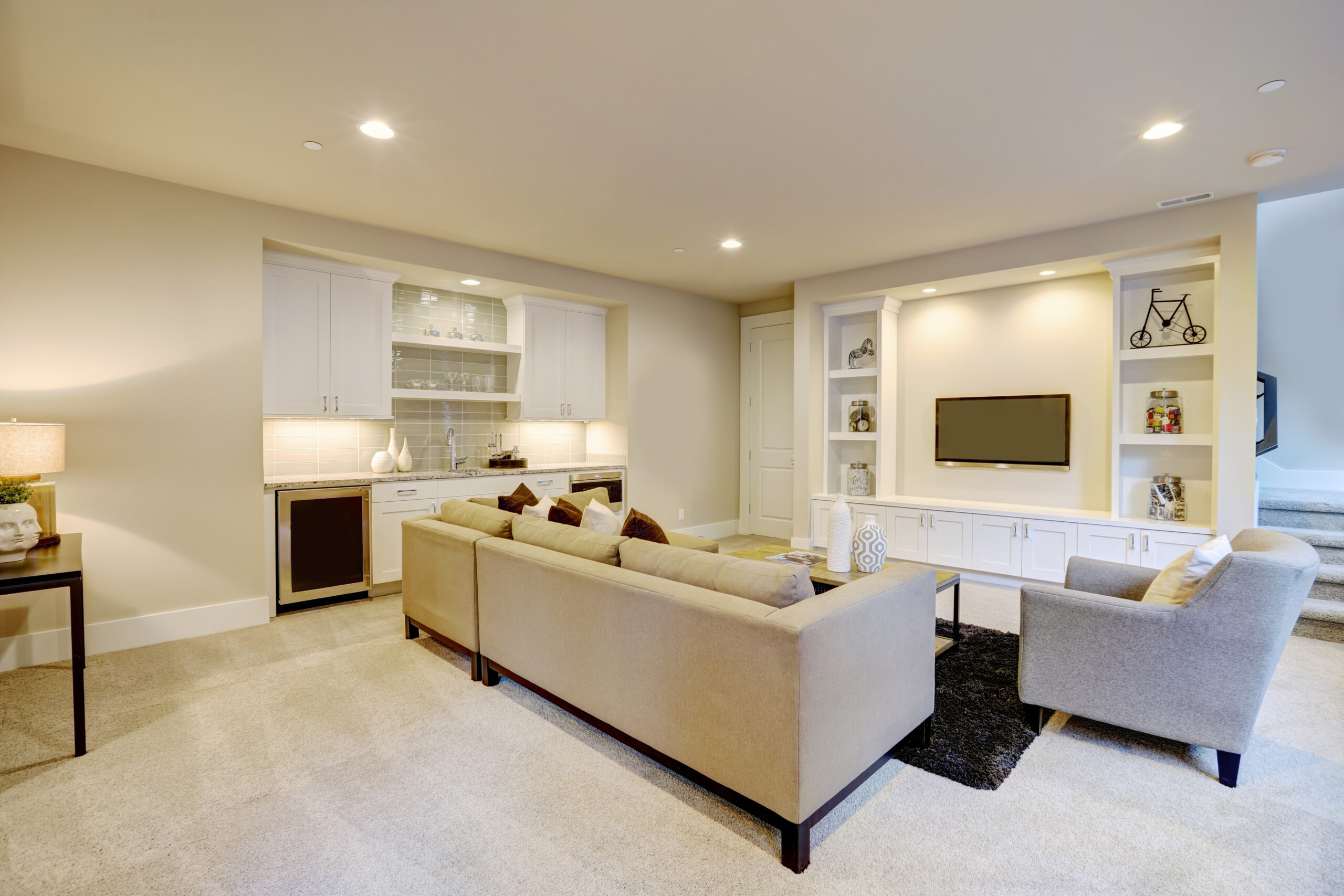DIY Tips for Low-Impact Basement Remodeling
One of the best “bang for your buck” renovations you can make to a home is to remodel a basement. Basement project ROI is currently around 75 cents on the dollar. That said, it can be a massive investment of time and involve a huge outlay of cash you may not have.
Here are a few suggestions for slightly lower impact basement remodels that will improve your home’s functionality dramatically, but won’t break the bank.
Add a Bathroom
If you have plumbing lines already roughed in, adding another bathroom will add value to your home and make your life as a family a lot easier. You can install just a powder room if you like, but putting in a full bathroom makes it a lot faster to get out of the house in the morning if your family has grown to the point where everyone is competing for shower time and mirror space.
Add Cabinets
The wall across from the stairwell (or under the basement stairwell itself) is the perfect place to install cabinets that can help keep the rest of your home looking uncluttered. Linens, out-of-season clothes, sporting equipment, food and cleaning items bought in bulk, and board games are all good candidates for basement storage. A couple of cabinets and a folding counter installed in a basement laundry room makes the whole process a lot more efficient.
Basements shouldn’t be damp and they don’t have to be dingy. Laundry (and ironing) will seem a lot less like a chore if the environment is cheerful and welcoming. Consider partitioning off the laundry area, installing brightly colored cabinets and countertops, painting the floor of that area, and adding an area rug.
If you’re doing a kitchen remodel and replacing your cabinets entirely, consider installing some or all of them in the basement after painting them. Or look for thrift store or Habitat for Humanity specials on cabinets. You can often find bargains on incomplete cabinet sets. Or you might find a row of lockers from a school or recreation center that’s being renovated. They’ll be the perfect height for a basement, and with the addition of a few shelves can be used to store pretty much anything you need to hide from view.
Finish Part of the Basement
If you find your home lacks a room or you need that “getting away from it all” sense of space by being on a different floor, away from the distractions of television, video games, and kitchen chores, you can finish just a portion of your portion by creating a zone with divider walls. A home office in the corner of your basement can still be a room of one’s own — and, more importantly, a room with a door on it if you work from home.
Paint the walls rather than worrying about drywalling, leave the ceiling open, and invest in a comfortable office chair and a large, thick rug instead. If you have to do video calls, set up a green screen that makes your hourly rate seem like a bargain to potential clients.
For a larger area, use drywall sparingly and investigate other lower maintenance, quick-to-install wall treatments. Basements are perfect for a touch of industrial. With their low ceilings, leaving pipes and ceiling joists exposed will minimize any feelings of claustrophobia, save money, and still allow you access to wiring and pipes for the rest of the house. If you want the pipes to recede, paint them a dark color. That will force the eye down so its focus becomes the furnishings and artwork.
Keep it Clean
Sticking to white for ceilings, walls, and floors will do more to compensate for the lack of natural light from which most basements suffer, unless you’re lucky enough to have a sloping lot and a basement that is actually a ground-floor walk-out.
Add color with posters, paintings, area rugs, throw cushions and seating. Sticking to all-white will make the painting go faster (no need to tape around door frames and baseboards, no worries about getting wall color on the ceilings) and will also make touch-ups a breeze.
Things to Consider
Moisture can be an issue in many basements. Before embarking on a full or partial basement remodel, make sure you’ve got good roof drainage that leads water away from your foundation walls. If you do decide to drywall all or part of your basement, use breathable insulation and install a vapor retardant between the interior walls and floors as well as between floor slabs and foundation walls.
It’s better to be safe than sorry. Don’t install wall-to-wall carpeting in a basement, even if it tends to be chilly. Use area rugs, carpet tiles in an unconventional pattern, or take a look at vinyl planking, engineered wood, or cork flooring options.
Let’s face it: pipes sometimes burst, washing machines can run amok, and your basement is the first place that will experience flooding in adverse weather events. Do everything you can to prevent that from happening, but don’t pour thousands into basement flooring you can’t afford to replace if your insurance doesn’t cover everything or you have a high deductible.


